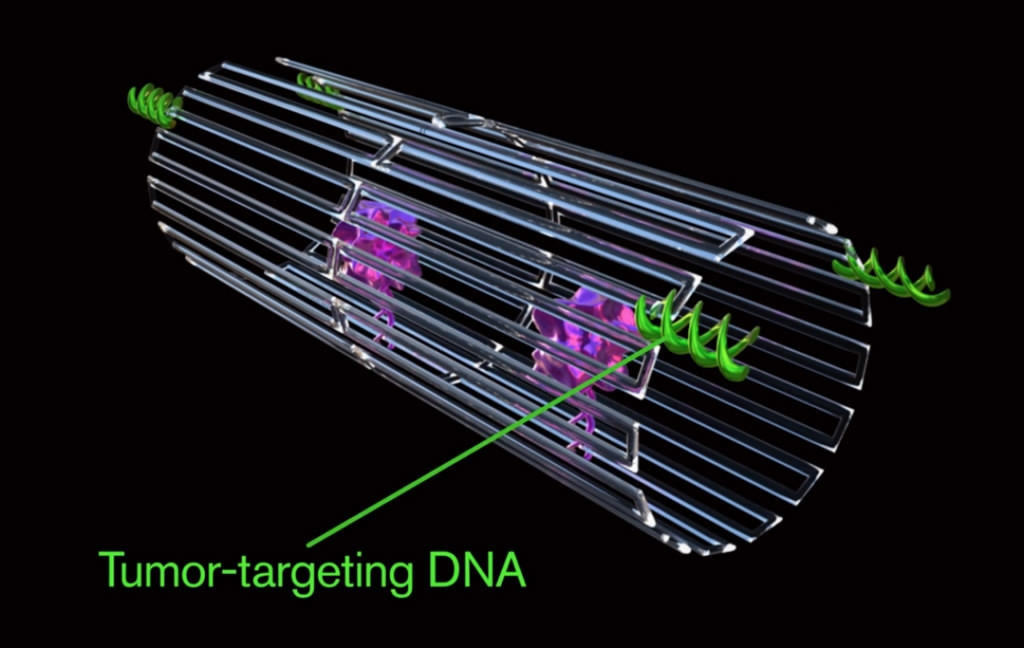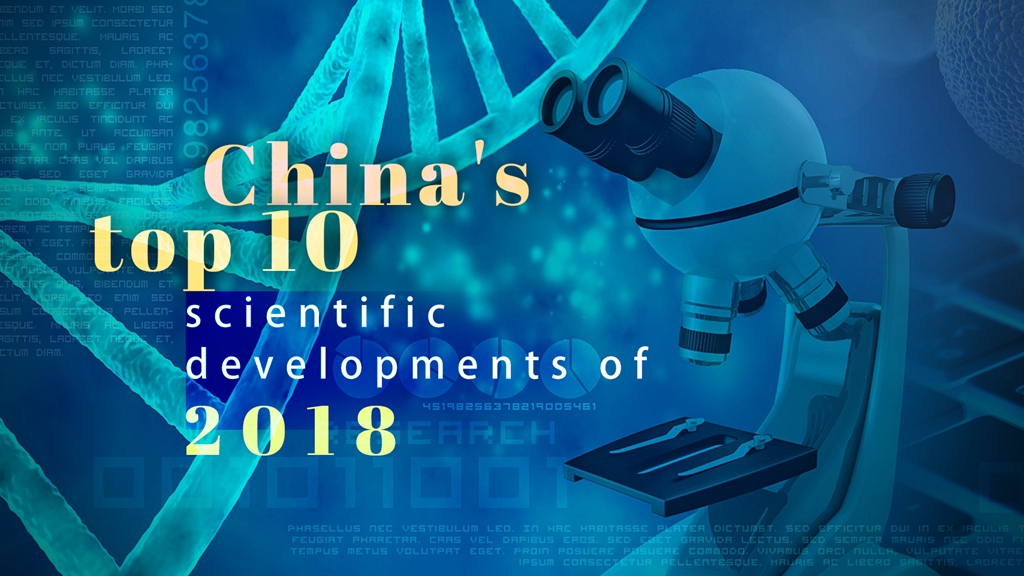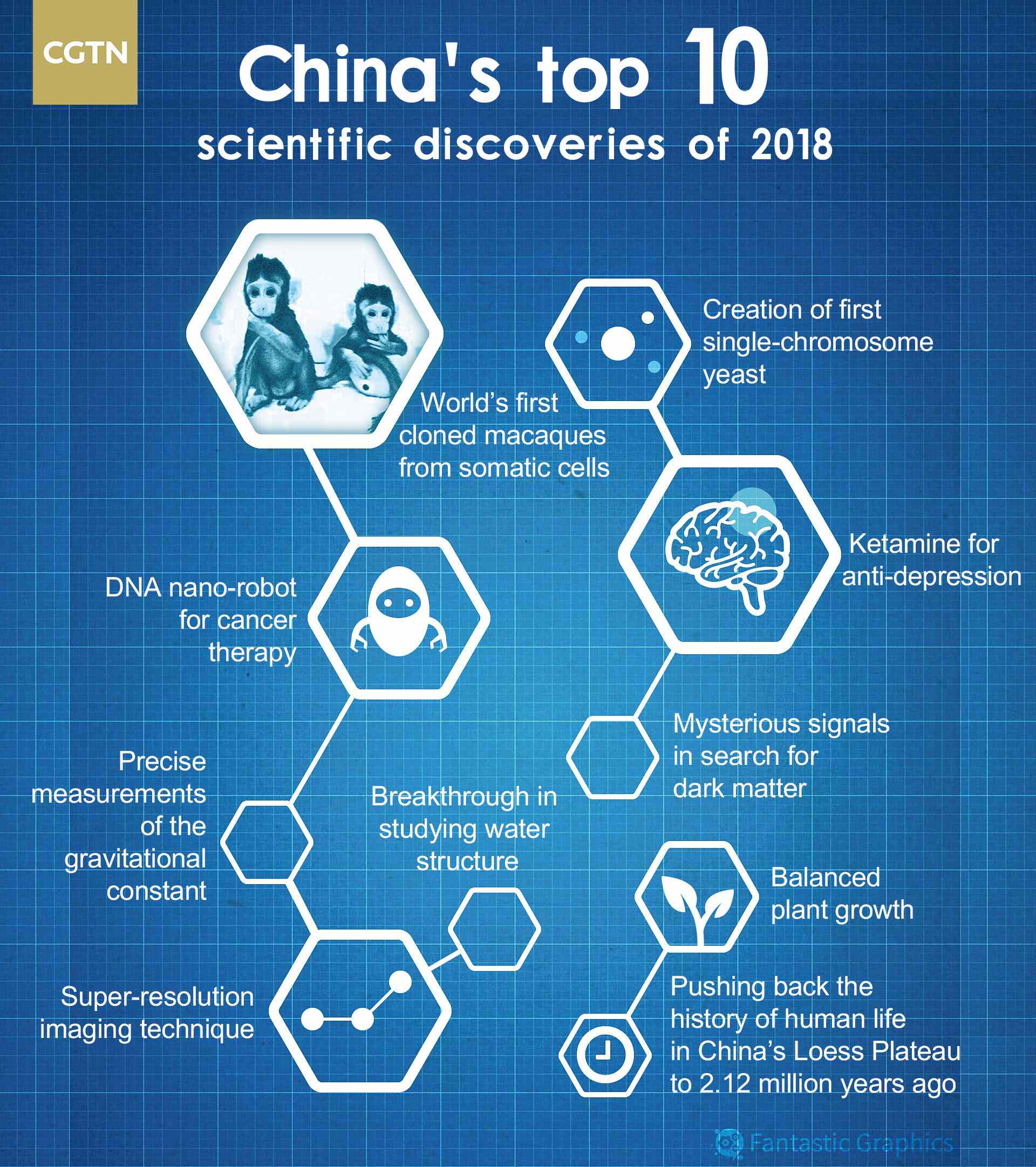China's Ministry of Science and Technology Wednesday selected the country's top 10 scientific developments of 2018, including macaque monkey cloning, a DNA nanorobot and the precise measurements of the gravitational constant. The following are highlights of the major developments:
1. Macaque monkey cloning

Monkeys cloned from a gene-edited macaque with circadian rhythm disorders are seen at the Chinese Academy of Sciences in Shanghai, China in this handout picture provided by the Institute of Neuroscience of the Chinese Academy of Sciences on January 24, 2019. /VCG Photo
Monkeys cloned from a gene-edited macaque with circadian rhythm disorders are seen at the Chinese Academy of Sciences in Shanghai, China in this handout picture provided by the Institute of Neuroscience of the Chinese Academy of Sciences on January 24, 2019. /VCG Photo
Chinese researchers cloned the world's first macaques from somatic cells by the same method that made Dolly the sheep. It made research with customizable populations of genetically uniform monkeys a possibility, with the potential of furthering human disease research.
2. Creation of first single-chromosome yeast
Chinese scientists have created a single-chromosome yeast, and its life functions show no difference from its wild counterparts, making it the first time in the world that organisms with multiple chromosomes were artificially transformed into single-chromosome forms.
The research shows that a complex genome system can be simplified through manual intervention. This study may also pave the way for new man-made species in the future.
3. Ketamine for anti-depression
Chinese researchers reported in the journal Nature how the anesthetic painkiller ketamine blocks the neuronal activity that drives depression-like behavior. The finding may provide new perspectives on the treatment of depression and anxiety, which currently affects some 300 million people worldwide.
4. DNA nano-robot for cancer therapy

The DNA-based nanorobot has a tube-shaped structure with a diameter of about 19 nanometers and a length of about 90 nanometers. /Photo via Arizona State University
The DNA-based nanorobot has a tube-shaped structure with a diameter of about 19 nanometers and a length of about 90 nanometers. /Photo via Arizona State University
Chinese scientists have constructed an autonomous DNA robot programmed to transport payloads and present them specifically in tumors. The nanorobot proved safe and effective for mice and pigs. It represents a promising strategy for precise drug delivery in cancer therapy.
5. Precise measurements of the gravitational constant
Chinese scientists have calculated the most precise value of the gravitational constant, one of the most fundamental constants of nature. To achieve their results, the team used both the angular-acceleration-feedback method and time-of-swing method to come close to producing an accurate value.
6. Mysterious signals in search for dark matter
In late 2017, China's Dark Matter Particle Explorer (DAMPE) detected unexpected and mysterious signals in its measurement of high-energy cosmic rays, which might bring scientists a step closer to shedding light on invisible dark matter.
It is the first time a space experiment has reported a detailed and precise electron and positron spectrum up to about 5 tera-electron-volts (TeV, corresponding to one trillion times the energy of visible light). In this energy range, the Chinese researchers detected a spectral break at 0.9 TeV and a possible spike at 1.4 TeV.
7. Breakthrough in studying water structure
Using China-developed new atomic force microscopy, scientists have observed the atomic structure of the hydrated ions in their natural environment. It is the first time visualizing the atomic structure of hydrated ions since the notion was proposed more than 100 years ago.
Scientists also discovered that exactly three water molecules are needed to allow a single sodium ion to travel 10 to 100 times faster than other ion hydrates, a process that could lead to more efficient ion batteries, anti-corrosion coatings and seawater desalination plants.
8. Super-resolution imaging technique
A team of Chinese and U.S. scientists developed a new imaging technology that can perform high-speed, long-term and super-resolution imaging of intracellular physiological processes. Using this technique, a variety of new interactions between organelles were discovered.
9. Balanced plant growth
Crops can be bred with high yields and less fertilizer, as Chinese researchers found a growth-regulating transcription factor GRF4 that had the opposite effect of a growth-inhibiting protein called DELLA in crops. GRF4 and DELLA existed in a balance that regulated plant growth and nitrogen metabolism.
The finding could aid efforts toward reaching sustainable global food safety.
10. Earliest evidence of humanity

Archaeologists found a series of stone tools from the Early Pleistocene at Shangchen in the Chinese Loess Plateau. /VCG Photo
Archaeologists found a series of stone tools from the Early Pleistocene at Shangchen in the Chinese Loess Plateau. /VCG Photo
Archaeologists found a series of stone tools from the Early Pleistocene at Shangchen in the Chinese Loess Plateau. The oldest ones date back to 2.12 million years ago, 270,000 years older than the 1.85-million-year-old skeletal remains and stone tools from Dmanisi, Georgia. The new discoveries suggest that there may have been a human presence outside Africa earlier than previously thought.
The results were selected from 353 sets of research carried out from December 2017 to November 2018.
About 2,600 leading scientists from the Chinese Academy of Sciences, the Chinese Academy of Engineering and other academic departments voted online for the 30 candidates.
(Top image by CGTN's Yin Yating)
Source(s): Xinhua News Agency






